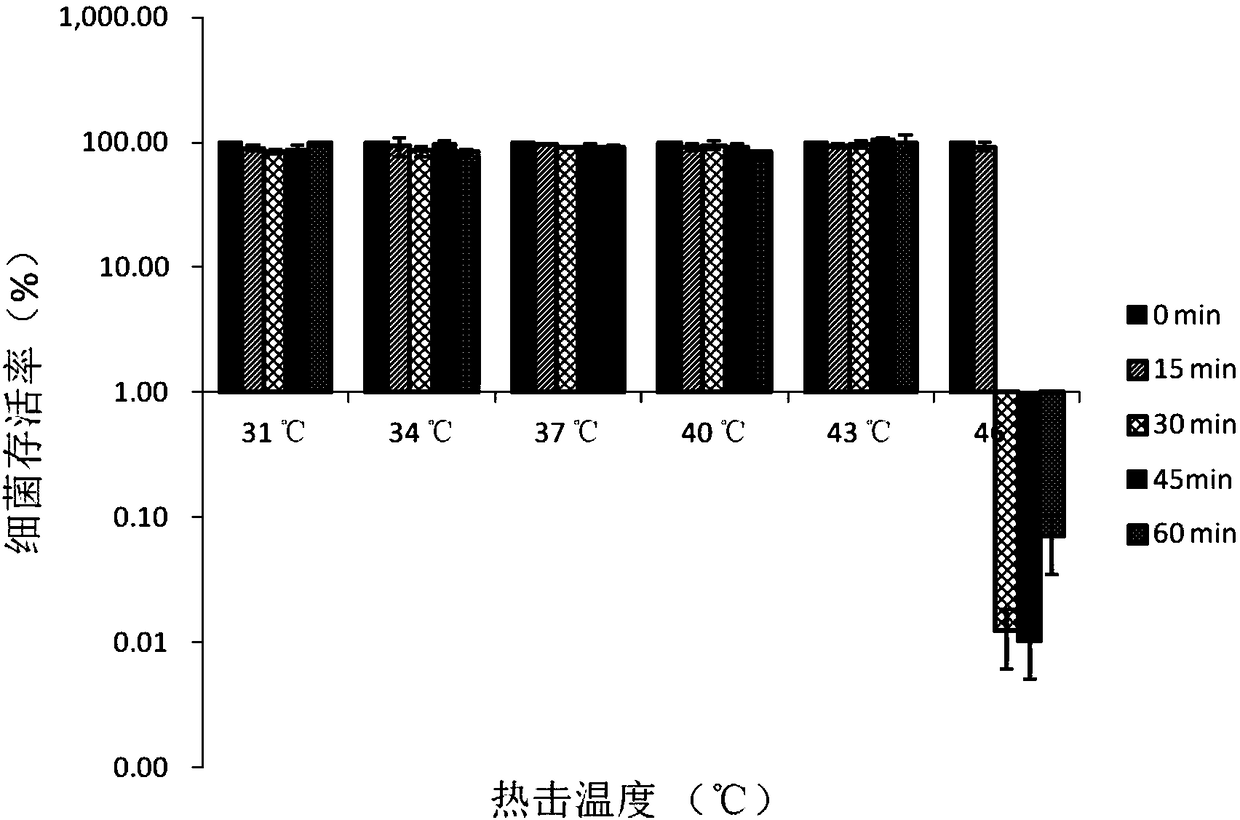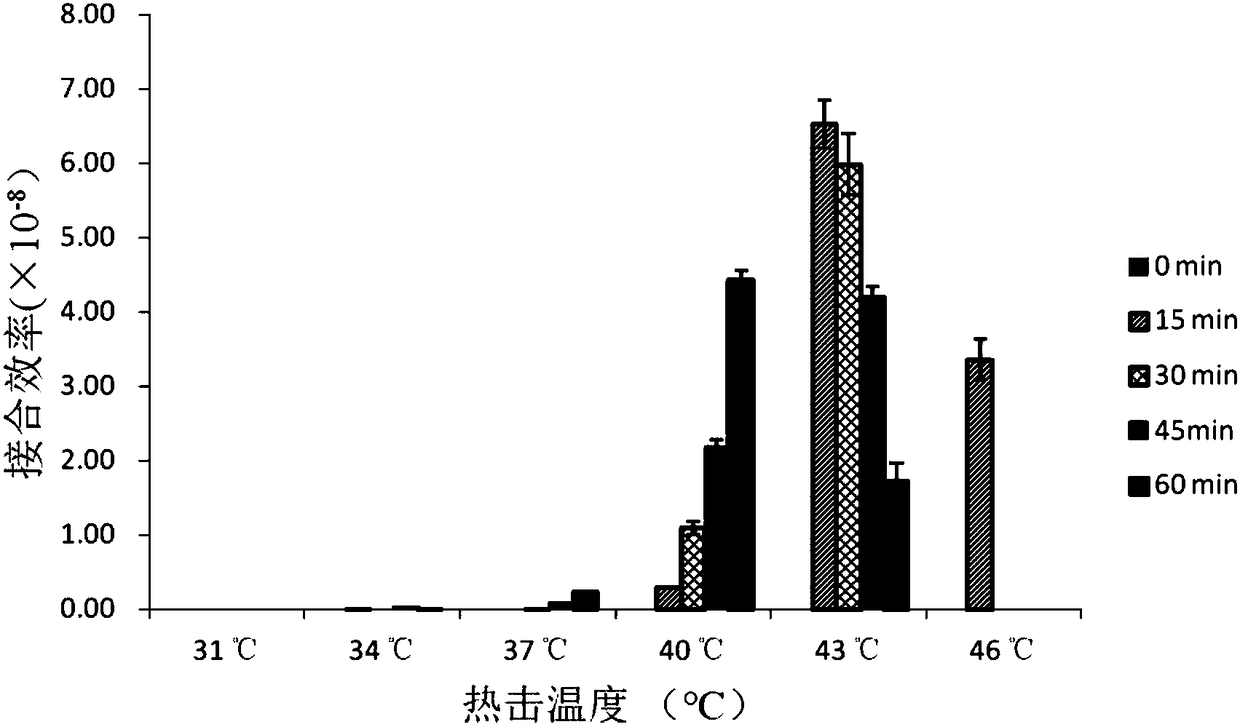Method for improving genetic transformation of Vibrio harveyi
A technology for genetic transformation of Vibrio harveylius, applied in the field of improving the genetic transformation of Vibrio harveylia, can solve the problems of unsuccessful conjugation transformation and low efficiency, and achieve the effect of low cost and simple operation
- Summary
- Abstract
- Description
- Claims
- Application Information
AI Technical Summary
Problems solved by technology
Method used
Image
Examples
Embodiment 1
[0044] 1. Preparation of donor bacteria:
[0045] (1) Preparation of Escherichia coli E.coli GEB883 Competent Cells
[0046] (1) E.coli GEB883 was streaked onto an LB solid plate supplemented with 0.3mM DAP, and cultured overnight at 37°C;
[0047] (2) Pick E.coli GEB883 single clone into LB liquid medium supplemented with 0.3mM DAP, and culture overnight at 37°C and 200rpm;
[0048] (3) Dilute 1 mL of the overnight bacterial solution to 100 mL of LB liquid medium supplemented with 0.3 mM DAP, and culture at 37°C and 200 rpm until OD600nm=0.6-0.8;
[0049] (4) Cool the bacterial solution on ice for 10 minutes, and centrifuge at 4°C and 4000 rpm for 15 minutes;
[0050] (5) Remove the supernatant, and use 50mL sterilized and cooled 50mM CaCl for bacterial precipitation 2 Resuspend and place on ice for 20 min;
[0051] (6) Centrifuge the bacterial solution at 4°C and 4000rpm for 15min;
[0052] (7) Remove the supernatant, and use 2.5 mL of sterilized and cooled 50 mM CaCl con...
Embodiment 2
[0079] Set up metal baths at 37°C, 40°C, and 43°C respectively, and perform heat shock treatment on the recipient bacteria liquid with early logarithmic OD600nm=0.3-0.7, and heat shock for 15 minutes, 30 minutes, 45 minutes, and 60 minutes at each heat shock temperature , and set a group without heat shock as a control group of heat shock 0min; other steps are the same as in Example 1.
[0080] Experimental data proves that the survival rate of the recipient bacteria Vibrio harveii is stable at 90-100% ( figure 1 ). In addition, when the heat shock temperature was 37°C and the heat shock time reached 30 min, the conjugation conversion efficiency increased from scratch, and with the prolongation of the heat shock time, the conjugation conversion efficiency increased significantly, reaching a maximum of 2.29×10 -9 ; When the heat shock temperature is 40°C, the conjugation conversion efficiency increases significantly with the prolongation of the heat shock time, and compared wi...
Embodiment 3
[0082] Set up a metal bath at 46°C, and heat-shock the recipient bacteria liquid with OD600nm=0.3-0.7 in the early logarithmic period. Group as the control group of heat shock 0min; other steps are the same as in Example 1.
[0083] The experimental data proves that when the heat shock temperature is 46°C and the heat shock time is 15 minutes, the bacterial survival rate is stable at 90-100%, but when the heat shock temperature is 46°C and the heat shock time is 30-60 minutes, the survival rate is significantly fall below 10% ( figure 1 ). In addition, when the heat shock temperature is 46 °C and the heat shock time is 15 min, the bonding efficiency is still relatively high, which is 3.35×10 -08 , and when the thermal shock time exceeds 30min, the conjugation conversion efficiency is zero (such as figure 2 ).
PUM
 Login to View More
Login to View More Abstract
Description
Claims
Application Information
 Login to View More
Login to View More - R&D
- Intellectual Property
- Life Sciences
- Materials
- Tech Scout
- Unparalleled Data Quality
- Higher Quality Content
- 60% Fewer Hallucinations
Browse by: Latest US Patents, China's latest patents, Technical Efficacy Thesaurus, Application Domain, Technology Topic, Popular Technical Reports.
© 2025 PatSnap. All rights reserved.Legal|Privacy policy|Modern Slavery Act Transparency Statement|Sitemap|About US| Contact US: help@patsnap.com


